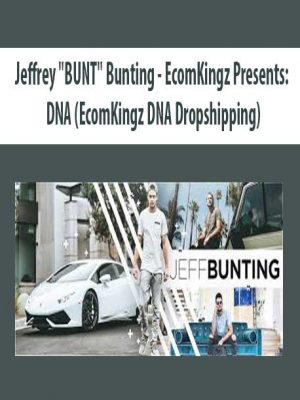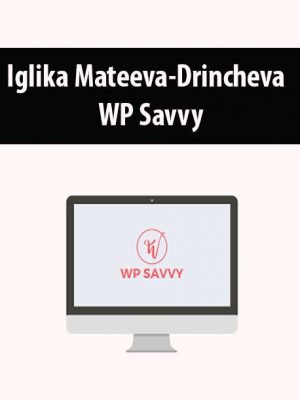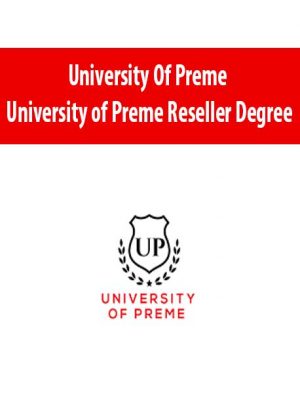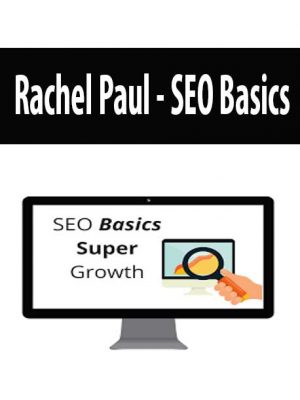Michael E. Gerber – The Course: Beyond The E-Myth
$295.00 Original price was: $295.00.$45.00Current price is: $45.00.
Proof of item:
“How To Quickly Build And Scale A Business Using An Efficient, Affordable, And Remarkable Process That E-Myth, Apple, Infusionsoft And Other Major Enterprises Used When Going From a Blank Sheet Of Paper To Creating An Extraordinary Enterprise” . . . and how you can use the exact same process to create a new life, using only the resources you have available to you right now.
“This is one of the most powerful programs on earth for business owners who want to grow an extraordinary enterprise” . . . from Michael E. Gerber, the man Inc. Magazine calls “The World’s #1 Small Business Guru”
From: Michael E. Gerber
The Simple Solution to Economic Growth
What I’ve experienced over the past 40 years, working with small businesses around the globe, is that there’s a simple solution to economic growth.
Yes, I know we’ve all been taught that economics is complicated. A very sophisticated study. The stuff of large multinational corporations. The stuff of governments. The stuff of degree’d academics. The stuff of advanced degrees, and organizations devoted to the conversations and the considerations which run through it. The stuff of politics, of studies, of White Papers, of Reports, of Scientific scented Papers, of large, heady institutional panels, and talking heads.
The stuff of the elite, not the hoi polloi. The stuff of the 1%, not of the 99%. Difficult to understand, even with a doctorate on the subject.
Thus, we’ve all been told that the key to economic success rested upon our ability to get a “higher education” so that we could “understand” the often arcane physics of economics.
As though there was a language we needed to learn, an economics language, and until we learned the language of economics, we couldn’t even begin to carry on a conversation about economics.
And that language, if we elected to learn it and speak it, would demand that we enrolled in the educational hierarchy devoted to install and instill within those of us traveling from our hoi polloi status among the little people, to rise academically so we could be accepted, finally, among those elite institutions where the real living was done.
And so, countless millions of our young ones, along with their moms and dads, took on a huge financial obligation (getting higher each year!) to finance that “higher education”, even when they weren’t certain what the purpose of that “higher education” was. . . (Remember, it was spoken in a foreign language!). . . other than to make a good living when they were done, that is.
And, with exactly the same belief in hand, our government loaned all those upwardly aspiringly mobile kids the high gross dollars needed to enter the higher realm to get it. To get their ticket into that special world.
And our wonderfully motivated government made the commitment to do this obviously most important of important things, even though our government hadn’t yet figured out how these kids were going to pay back the once they graduated from the higher institution, and then found themselves back on the same street they’d come from!
Meaning, where were the jobs going to come from?
And, even more important, what kind of jobs were they being prepared to do, upon leaving the “higher learning” institution which gave them their passport to freedom, their certificate of graduation?
Not only that, but no one – not the moms or the dads or the “higher education” institutions which gladly took the money these kids borrowed from Uncle Sam and then turned over to them—had any idea what work these kids were going to do when they graduated with their “higher education”.
Not a clue!
Or how each of them were going to secure a reasonable return on their educational investment?
(Actually, nobody has figured out the answer to that question it seems, as the debt accumulated by all those kids, graduating from our colleges and universities, has now risen to a staggering $1.4 trillion, and growing! A monstrous economic bubble, bigger even than the devastating housing bubble of 2008! Look out for when it bursts!).
Talk about a bubble!
Talk about an economic catastrophe!
Even a dumb plumber would know such a bubble when he sees one.
Unfortunately, and evidently, not a soul among these smart and getting smarter “higher education” folks now surrounding us, the great steaming throng of them, a great and growing bubble of their own, the greater and greater percentage of whom are now on the dole – on government subsistence — from the very same government that financed their “higher education,” not one of them seem to have a clue about what hit them and why it hit them, and where they’re supposed to go, and how they’re supposed to get there.
Seems like all their highly paid professors have left them out here alone, in the cold, with only their politics to keep them warm, and the senators and congressman, and Presidents, and Supreme Court Justices, and their Governors, and whomever, all those who assaulted the chambers of whatever institution they were accountable for, because not one of them ever asked the earnest and honest question, so what’ this “higher education” thing we’re investing in – this all too Public Education – supposed to produce, what are all these kids supposed to DO with it?
Become a politician?
Become a professor?
Become an attorney?
Become an agitator?
March down the streets of Washington D.C. for justice!
Become a cog in the wheel of this all too socialized monstrosity we’ve somehow elected to build?
This hobgoblin, this gobbledygook, this monstrosity without wheels?
And then there’s the real world, the world in which the makers make and the doers do and the creators create. . . .
On the other hand, in my experience with the tens upon tens of thousands of small companies we’ve worked with over the years, economics is not sophisticated, is not complex, is not difficult at all to get a handle on.
Indeed, over the past 40 years of my small business development career, I’ve watched tens of thousands of folks seemingly at the bottom of the economic and educational barrel-called-ladder, produce stunning economic outcomes, with little more than a grade school or high school education to serve them.
“Grade school, high school.” Get it?
Guys like Steve Jobs and Bill Gates, for example.
Guys like plumbers and electricians and mechanics and landscape contractors.
Guys like graphic designers, and hair designers, and personal trainers, and carpenters.
Software guys, and hardware guys, agile guys and driven guys, ladies and gentleman who were driven by a different muse, a different schedule from all of their higher seeking peers.
In short, it wasn’t their education that provided them with their economic smarts;
. . . it was their vigorous curiosity and passion for making it on their own.
There was something remarkably stimulating about their drive to succeed, those guys and ladies I met, their determination to make something happen, to climb a ladder of their own individual economic possibility, and to then go higher than even that.
In sum, economics, I discovered, watching all these small business folks do their thing, is nothing more than a balance sheet showing the plusses and minuses produced by their continuous grass roots effort.
Anyone with a simple calculator or the ten fingers on their two hands could add it up.
It came down to nothing more or less than, did I do it or didn’t I?
And if I did, why did I?
And if I didn’t, why not?
And if it worked, how so?
And if it didn’t work, why didn’t it? What was missing in this picture?
And the answers as to why yes and why no were as clear as the metaphorical bell.
Any dummy could figure it out.
Allow Me to Share their Secret with You
Economics, the way it works on the street, is simply a matter of choice and action.
The choice to make it on your own, to excel at it, and the action to make that happen.
In a business, I discovered, the first choice is who am I here to serve?
Meaning, who’s my customer?
The smartest of the smart guys on the street, I noticed, didn’t start with what am I going to sell?
They started with, if I had it, whatever “it” needed to be, who am I going to sell it to?
Economics, therefore, was about motivations, perceived needs, real needs, and consequences.
In short, about the customer.
The customer was and is the driving force behind economics.
Not the business, but the customer.
How customers thought, felt, lived, did without, made do, survived, made decisions, managed their affairs, all of these were the subject of most concern to what I’ve come to call, “street economics.”
Without understanding needs and wants, no economy could thrive.
Which was both the aggregate of those very same needs and wants, and the aggregator of them.
Meaning, since businesses were the product of the very same people’s needs and wants we call customers, only differently expressed, in order to be successful at fulfilling one’s needs and wants to make it on one’s own, one’s own needs and wants needed to be understood even more clearly, lest the long term expenditure of time and money and emotional and mental energy to make it on your own – to start your own small business — would be wasted on a failed effort.
Needs and wants.
The glue which holds every economy together.
Or pulls it apart.
This was loud and clear to me as I worked my way through the small business jungle I encountered way back then, starting out in 1975, when I was preparing to get educated as to the startlingly vibrant world in which the economy did its thing.
Educated on the street where the real action was, not in a school where it wasn’t!
It became clear to me that the business guys who became experts at satisfying needs and wants, were the stars of that universe, that jungle, and those who didn’t, failed.
What the stars learned, I learned.
What the “also-rans” learned, I put in my books, and in my programs.
It became obvious to me what my work was to be, starting out back then at the mid-life of my life, at the age of 41.
I was to transform the “also-rans” into stars.
And I had to figure out a way to do it.
One more step into the jungle inhabited by “also-rans”.
But, it wasn’t just the needs and wants of the consumer the “also-rans” needed to know about to become “economic stars.”
It was about understanding the needs and wants within themselves which was essential if any progress was to be made.
Not to put too fine a point on it, the question — who am I? — became the driving question our new “also-ran” clients needed to entertain, but in earnest.
Our small business clients first needed to become introspective before they became ‘extro-spective’. They needed to look inside before they looked outside.
That’s where confidence is born.
That’s where the will to aspire is generated.
That’s where the imagination is stimulated to churn its delightful engine toward the seeming Unknown.
I say “seeming Unknown” because I grew to understand that the Unknown as we see it is actually right there inside of each and every one of us just waiting to be discovered.
The language is a language we already know.
Unlike the extreme language of economics, foreign to us all, the language of imagination is composed of pictures, and stories, and feelings and colors, and music, and desires and human stuff which radiates all about us and through us, in stuff we’ve seen, and stuff we’ve felt, and stuff we’ve thought, and experiences we’ve had.
It’s the stuff of poetry, and rap, and jazz, and harmonics, and love, and children, and husbands and wives, and moms and dads, and Beethoven, and Brahms, and Michelangelo, and Picasso, and sex, and tears, and laughter, and your great uncle, Dave.
And what else do you think making it on your own is all about?
Why nothing else, of course.
Other than to discover your very own path and then begin to forge forward on it, and to invent it every single step of the way.
It’s that which I made the commitment to bring to everyone.
The will and the wiles to forge one’s own way.
Welcome to “The Course™” and The Re-Invention of Your Life.
So how would we take on the transformation of your company?
Read on.
Transformation: A Matter of Mindset and Action
It is what I call:
“Beyond The E-Myth: The Evolution of an Enterprise:
From a Company of One to a Company of 1,000:
The Hierarchy of Growth:
And . . . Why Most Small Companies Absolutely Refuse to Grow and What to Do About It!™”
Yes, I know – it’s an extreme mouthful 
As I told you when we met, my work over the past 40 years has been about what I called, “fixing broken businesses.”
Over that time, every single one of the more than 100,000 small company owners who applied our E-Myth Paradigm through what was then called E-Myth Mastery™, had come to me to fix their broken businesses.
Of course, they didn’t call it that; they didn’t think of it as “fixing their broken business.”
They just wanted to get everything to work better than it was.
Whether that be to improve sales, or marketing, or finance, or people, or management or some other particular function in their business, their sole purpose in coming to me was to fix it.
They were struggling, and they were tired of it.
And what a difference we made together!
Everything that was broken got fixed.
Not immediately, mind you, and not for everyone.
Because you and I both know that nothing happens immediately, and not everybody does what they say they will do.
But, over time, dramatic improvements were made to tens upon tens of thousands of them.
And as that happened, my books soared in popularity as well.
And as my books soared in popularity so did my brand — The E-Myth Brand, which was essentially The Michael E. Gerber Brand, which was itself the Brand noted by my call to arms: “Working ON It, rather than just IN it!” — The mantra I called out everywhere and anywhere I was given the opportunity to.
Unfortunately, I wasn’t as delighted as my clients and the readers of my books were.
Yes, many of the problems they suffered from when I first met them were a thing of the past.
But, to me, something essential was missing.
While my clients were all beginning to reap the extreme benefits of “working ON their business, rather than just IN it,” the entrepreneurial expectation I had for them wasn’t taking hold.
My idea of “awakening the entrepreneur within” rather than simply becoming a more effective “technician suffering from an entrepreneurial seizure” wasn’t taking hold in their hearts, or in their minds.
And it certainly wasn’t taking hold in their actions.
Yes, their business was becoming more productive, but not to the degree I knew it could.
“Organizing for Growth,” as we spoke about it back then, was taken by most of our clients to mean getting more freedom to take time off.
To play golf.
To take a much-needed vacation.
To spend more time with the kids, and the like.
In other words, over the years – and it’s been over 40 years! — I discovered that the majority of my clients weren’t driven to create something extraordinary with their company as I expected them to; they were driven instead by the allure of comfort, of lifestyle, of using their newly organized company to take it easy, to live what they thought of as the good life.
Now, even as I say this to you, I can hear you saying, “Michael, what in the world is wrong with that? That’s exactly what I hope will happen to me!”
But, that’s just it, no matter how easy life became for my clients, no matter how much free time they gained by doing the work I taught them to do as they applied the E-Myth Paradigm and increased the performance of their companies, no matter how much time they got to spend with their kids, or on the golf course, or traveling to Spain, or Bermuda, or Florida, or Disneyland. . . it still wasn’t enough!
The problem was, I k new that at the outset, and spoke about it until I was blue in the face, but they didn’t listen!
And I knew that because I’d seen that, tens of thousands of times.
I knew that because I had addressed that phenomenon with hundreds of thousands of small business owners, now almost millions upon millions of times.
It’s the phenomenon I called “The Comfort Zone™.”
The Comfort Zone™ is that space where satisfaction, rather than inspiration, is the key driver.
To people caught up in their Comfort Zone™, the words and mindset of “not too much,” “not too fast,” “not too hard,” and “not too many” became the reality.
“Comfort Zoners™,” as I have come to call them, are exactly the opposite of true entrepreneurs.
Not that true entrepreneurs don’t value a good game of golf, a great meal, or a loving time with their kids, with their spouse, and with their friends, they most obviously do.
But, it isn’t what drives them.
It isn’t what gets them up out of bed every morning.
It isn’t what inspires them, excites them, and gives them the profound experience of creativity and joy that inventing a profoundly important enterprise does.
That’s what was missing for me in “fixing broken businesses.”
The perennial question, “Once fixed, then what?” became the driving question for me.
That’s where the transformation question came in. The talk that I gave in the event you attended was all about that. That’s what I set out to do with “Beyond The E-Myth.”
I set out to create a logical, powerfully intuitive process for Designing, Building, Launching and then Growing a world-class enterprise.
A process I intend to bring to the world in a way never done before.
A process which will enable us to become “the preeminent provider of economic development services worldwide™.”
Thus, this letter to you.
Which brings us to the following question:
Are You Certain You Want To Transform the World?
This is a question you will want to revisit often.
It’s the most important question you can ask yourself.
Let me tell you a brief story.
Recently I met with fifteen small business owners from Japan who had graduated from The Dreaming Room™ program led by one of my Dreaming Room Facilitators™ in Japan.
One of these graduates, a dentist, told me about the huge transformation that had taken place in his dental practice as a result of the work he had done in The Dreaming Room™.
His Dental Practice was now committed to not only providing dental work, as most dentists do, but to transform the dental hygiene of his patients, their children, their friends, and their loved ones.
Accomplishing that called for a complete transformation of how his Dental Practice did business.
As he went to work ON his Dental Practice, with his Dream, Vision, Purpose and Mission firmly in hand, the transformation began to occur.
Today his Practice occupies four stories of an office building he owns.
The second, third, and fourth floors are each devoted to one segment of his Total Dental Care business model.
The first floor is a daycare facility where his employees’ young children are cared for and taught while their parents are at work and where even his patients’ children can be engaged while their parents are receiving their dental care.
Each of the other floors in his newly designed Dental Practice are devoted to one clearly identified service his innovation produced, all working systematically and consistently to fulfill his Dream, Vision, Purpose and Mission.
Can you see the importance of his unique innovation? Well, his community did, as did his people. The Practice is growing by leaps and bounds.
And yet, even as I saw it and acknowledged his achievement, which has and will continue to benefit so many people, I had to confront him with a new question.
“Now what?” I asked him.
“Now that you’ve created the working prototype for the ideal dental practice of the future, what do you intend to do with it?”
His response was puzzlement. He was absolutely unprepared for that question!
He had come with the other fourteen graduates of our Japanese-led Dreaming Room, all the way from Japan, to spend three hours with me in California, USA, to say “thank you” for the profound impact I had had on his work and on his life, and to ask me the most important questions he presumably had about them.
But he never expected me to ask him a question—especially that question.
After all the work he had done to implement his Dream, Vision, Purpose and Mission (you remember me mentioning those, I’m sure), he had come to rest in his Comfort Zone™.
In short, this dentist thought he was done!
“Done?” I asked him. “
“Why you’ve just begun!” I said.
“Just begun?” he asked. “What’s left to do?”
“Well, for openers…” I responded, “what’s left to do is this: move out of your Practice; open your corporate office; stop practicing dentistry yourself; become the entrepreneur you committed yourself to become; complete your prototype; turnkey it to the max; and then replicate it throughout Japan. That’s what’s left to do! Make a huge difference in the world!”
“What’s left to do,“ I continued, “is to transform the state of dentistry worldwide. What else did you think this was all about?”
You see what I mean, when I ask you the question, “Are you certain you want to transform the world?”
I mean just that.
1 review for Michael E. Gerber – The Course: Beyond The E-Myth
| 5 star | 100 | 100% |
| 4 star | 0% | |
| 3 star | 0% | |
| 2 star | 0% | |
| 1 star | 0% |
Sorry, no reviews match your current selections
Q & A
Related products
Internet Marketing
Jeffrey “BUNT”? Bunting – (Beta) DNA: Foundations(DNA Flagship)
Internet Marketing
Larry Humphreys – Work From Home Sell Wholesale Products Using Amazon FBA
Internet Marketing
Internet Marketing
Internet Marketing
Internet Marketing
Internet Marketing














fast shipping | Michael E. Gerber – The Course: Beyond The E-Myth